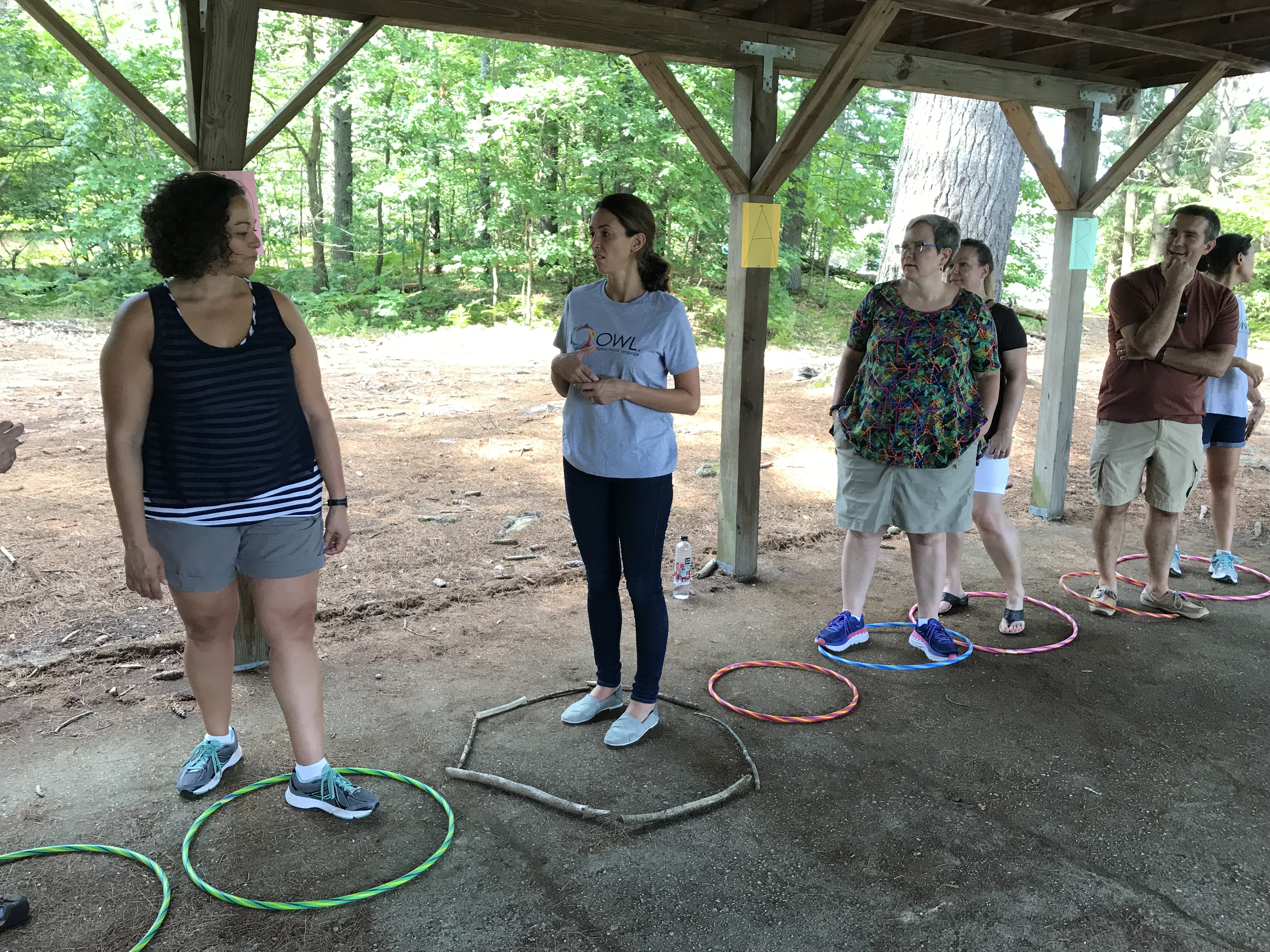
As many districts in the country are moving to online teaching and learning, many of you may be wondering how teaching or learning is going to happen remotely. It certainly appears to be a daunting challenge, however, there are many ways to continue to engage kids, even if you are not in-person in class together.
The entire basis of OWL is centered on interaction, play, the circle structure and face-to-face conversation. So, how can this still happen when not everyone is in the same room together? First of all, be thinking about how to emulate the same concepts, whether together or apart, and remember a few tips to help ease the frustration.
As you begin to work online, here are some common platforms to incorporate that can be used to help students access each other.
- Edmoto
- Google Meet
- Zoom
- Start a class website where they can message back and forth to each other
- Private FB page where students can share documents, images, etc.
Online Tips
- Online feels different. It will not feel the same as being in the same space together, and that is ok. There will always be a lag and a slower pace. Everything will take longer. Class will move slower. Content will move slower. That is ok. Accept it and go with it. Work with the flow, and like a river, it will be much more effective than fighting against the current.
- You’re still building relationships online. Ask how they are. Start with each of them acting, showing a picture or saying something about what is happening with them. This situation is actually ripe with ideas and ways to pull from the students. This is the time to get to know your students in a new way. Some questions you might ask them to get started include; What are you watching? Playing? Reading? How are you feeling? What do you miss about school? Not miss? What do you enjoy about being home? Not enjoy? What is happening around the world?
- Using 10-15-5 is an effective structure to keep momentum and maintain procedures for you and students. Online is unknown and new, so the more that students can know about what is happening, the better they will feel.
10-15-5 is the OWL structure. It is based off of a thirty-minute ‘class’, however, the time can be adjusted to fit the time you have with students. The 10 represents the first few minutes of class. This time is dedicated to simply reviewing what students already know, making them feel comfortable and successful. This is especially crucial with online and remote work. Since the students will have less exposure, repetition and review will be key.
The 15 represents the part of class where new content, threads and questioning sequences are occurring. Build off of something from the previous class(es). With novice learners, add in new functional chunks or vocabulary. For example, if in the previous class or session, you were using ‘I like’ and food and hobbies, the next day you could either add in a new functional chunk, such as ‘I have’ / ‘I want’ / ‘I need’, etc., or stick with ‘I like’ and add in a new topic, such as weather and friends. For upper level classes, questioning will evolve and push language, moving into more open ended prompts, with sentence starters such as describe, compare, explain, offering an opinion, etc. These can also be ways to bring in relevancy and pique interest, by thinking about topics that will connect to them right now. Using hooks such as authentic resources can be a way to extend beyond just the student and bring in community and global issues.
The 5 represents the last few minutes of class or the session when you all review what happened that day together. This can be a great opportunity for a brief formative assessment, either shared orally or typed in to the chat section (depending on if you’re using google meet, zoom, etc.) In an online situation this is crucial for allowing students to see what language they have used and learned that day, and also to help them feel successful in a new setting.
Another idea for structure is to take time for smaller groups in the target language. This is also where the 10-15-5 can apply. Start with the whole class together, checking in to see how things are going, give an overview of the day or week, then break off into smaller groups where you can get more individualized time.
Start and end the session, however long, on a fun, happy note so that students look forward to the next one!
 I was once told that the most difficult part of working online is building trust. The advantage that we have is that we have already had the year to build trust and community in class. Continue to build on that. Continue to laugh together. Find ways to connect, even through the distance.
I was once told that the most difficult part of working online is building trust. The advantage that we have is that we have already had the year to build trust and community in class. Continue to build on that. Continue to laugh together. Find ways to connect, even through the distance.
- This is new territory for everybody. Be patient. Have grace with yourself and with students. Know that there will be bumps, and ups and downs. There will be days that it will still feel good and days that will feel like a waste of time. Remember that everyone is trying to make the most of the situation. Any exposure will help and keep them thinking about the language.
- Social and emotional check-in is key right now. I encourage you to still do this as much as possible in the target language. You might be surprised by what they are willing to share in the target language. It can start with something as simple as ‘How are you?’ or sharing a picture, thought, meme, etc. Consider how you can still provide as much language as possible. That being said, while the goal is to stay in the target language, use the first language as you see fit: the priority is to ease tension, share logistical information and support students.
As we all move through these times together, let’s continue to find ways to support each other with ideas, lesson plans, and resources. Share on any platform such as Twitter, Instagram or Facebook. Join the OWL Collaborative to connect with other teachers.
A main component of OWL is play and joy. Continue to still connect with kids in this way! Find humorous or ‘light’ memes, pictures, music, etc. You may be their only source of non-stress throughout the day. Share joy and love on your kids as you continue to get to know them in new ways.
